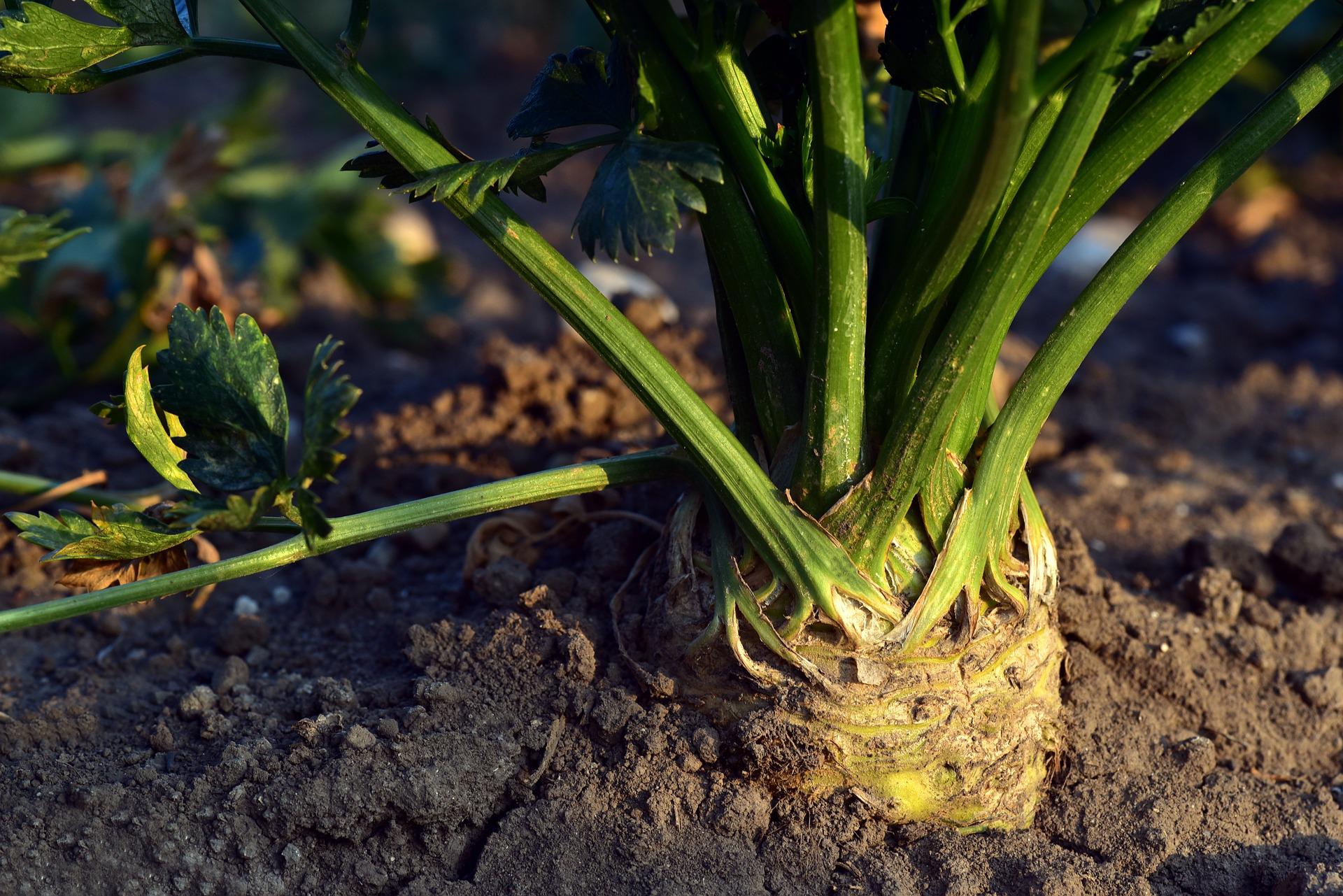If the soil intended for celery cultivation is low in humus, it is recommended to fertilize with manure at a rate of 40-60 t/ha. The manure should be plowed into the soil during the basic autumn tillage.
Conditions for Growth and Development of Celery
Celery can germinate at temperatures of 4-5°C. However, these temperatures are avoided during cultivation because young celery plants can vernalize at temperatures of 4-14°C in a very short time (just around 10 days), leading to premature bolting and undesirable flowering. For this reason, celery is grown from transplants cultivated under controlled conditions in protected environments, ensuring a temperature above 16°C. The optimal temperature for growing celery, which allows for proper development, is around 18°C.
The most suitable soils for celery cultivation are deep, fertile, medium-heavy soils with a neutral to slightly acidic pH. The soil should be rich in humus, which guarantees good air and water capacity. A moderate continental climate with average daily temperatures around 20°C, along with sufficient moisture in the soil and air, is most favorable for celery cultivation.
Soil Preparation for Celery
The soil should ideally be plowed (to a depth of 30 cm) in the fall before the preceding crop, incorporating manure. The furrow is closed by disking, and regardless of whether a winter crop was grown before the celery or not, the soil should be finely tilled to a powdery or fine-grained structure at a depth of 10-15 cm immediately before planting.
Fertilization of Celery
Mineral fertilization is carried out based on soil analysis and the planned yield. Generally, before sowing, 800 kg/ha of NPK 7-20-30 + Fe + Zn, plus 200 kg/ha of Urea 46% N, are added. Leaf celery has a greater nitrogen requirement as its leaves are harvested 2-3 times during the growing season. After each mowing, new leaves develop, which require sufficient amounts of nitrogen to ensure adequate quantity and quality. After each cutting, the crop is fertilized with 40-50 kg/ha of nitrogen.
A quick soil analysis can be done using portable measuring instruments designed for this purpose, determining soil pH and the amounts of basic biogenic elements NPK.
Planting Celery
Celery is planted in well-prepared soil with a fine-grained structure. When planting, care should be taken to plant the transplants at the same depth as they were in the protected environment.
Crop Rotation for Celery
Celery, like other crops in the Apiaceae family, must be grown in a crop rotation system. It should be planted on the same area every 4-5 years due to common pests that threaten its cultivation. Since celery is typically grown from transplants, it is planted at the end of May or in June, allowing for the cultivation of winter or early spring vegetables (such as lettuce, spinach, corn salad, or silver onions) on the area intended for celery before planting.
Planting Celery
Root celery is planted with a spacing of 50 cm between rows and 20-40 cm within the row, depending on the variety and planned harvest time. Celery for stalks is planted with a spacing of 40 cm between rows and 25 cm within the row, while leaf celery is planted at a spacing of 40 cm within the row and 1-2 cm between rows.
Planting can be done manually or mechanically, depending on the area and available machinery. As mentioned earlier, celery enters the vernalization phase as a very young plant at temperatures of 4-14°C, and in such conditions, it takes just around 10 days for the plant to successfully undergo this phase. This leads to premature bolting and flowering, which is undesirable. To prevent premature flowering, celery is exclusively grown from transplants. These transplants are cultivated in protected environments under controlled microclimate conditions, where the temperature must be above 16°C during cultivation.
Celery planting is done at the end of May and during June, allowing time for growing winter or early spring vegetable crops on the planned area before celery planting.













































